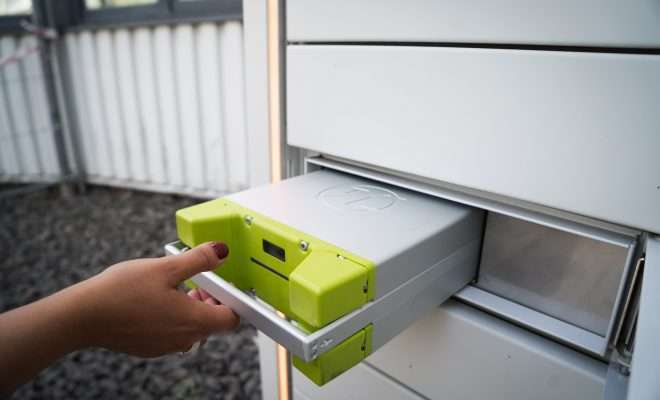
A Comprehensive Guide to Solar Batteries
A Comprehensive Guide to Solar Batteries
In an era characterized by environmental concerns, rising energy costs, and the increasing demand for sustainable energy solutions, solar batteries have emerged as a critical technology. These innovative devices play a pivotal role in storing the abundant energy harnessed from the sun. In this comprehensive guide, we will delve into the world of solar batteries, exploring their significance, functioning, types, benefits, and future prospects. A comprehensive guide to solar batteries.
Understanding Solar Batteries
What are Solar Batteries?
Solar batteries, often referred to as solar energy storage systems or solar battery banks, are devices designed to store the electricity generated by solar panels. They function as energy reservoirs, allowing homeowners and businesses to utilize the energy generated during the day when the sun is shining, even when the sun has set, or during periods of reduced sunlight.
The Significance of Solar Batteries
Solar batteries are instrumental in addressing several challenges associated with solar energy production:
- Energy Storage: Solar panels produce energy intermittently, with peak production during daylight hours. Solar batteries bridge the gap by storing excess energy generated during the day for later use, ensuring a consistent power supply.
- Energy Independence: By storing surplus energy, solar battery owners can reduce their reliance on the grid, offering a degree of energy independence and resilience during power outages.
- Grid Support: Solar batteries also contribute to grid stability and reduce strain during peak demand periods, potentially decreasing the need for additional fossil fuel-based power generation.
How Solar Batteries Work
2.1 Charging Phase
The operation of solar batteries can be broken down into two main phases: charging and discharging. During the charging phase, solar panels convert sunlight into electricity through the photovoltaic effect. This electricity is then sent to the solar battery for storage.
2.2 Discharging Phase
When the sun is not shining, or the energy demand exceeds solar panel production, the solar battery discharges stored energy back into the electrical system. This process typically involves an inverter, which converts the stored direct current (DC) energy into alternating current (AC), suitable for powering household appliances and the grid.
Types of Solar Batteries
Lead-Acid Batteries
Lead-acid batteries have been in use for a long time and are the most affordable option. However, they have limitations in terms of cycle life, depth of discharge, and maintenance requirements. They are often used in off-grid systems or as a backup power source.
Lithium-Ion Batteries
Lithium-ion batteries are the most popular choice for solar installations. They are lightweight, have a longer cycle life, and can be deeply discharged without significant damage. These batteries come in various types, such as lithium iron phosphate (LiFePO4) and lithium cobalt oxide (LiCoO2), each with its own characteristics and cost considerations.
Flow Batteries
Flow batteries are an emerging technology with the potential to revolutionize energy storage. They use chemical solutions as electrolytes, enabling scalable and long-duration storage. Flow batteries have a longer cycle life and are well-suited for large-scale applications, such as grid storage.
Saltwater Batteries
Saltwater batteries, specifically sodium-ion batteries, are an eco-friendly alternative. They are non-toxic, have a long cycle life, and can be recycled easily. While they are still gaining traction, they offer a promising solution for sustainable energy storage.
Benefits of Solar Batteries
Energy Independence
One of the most significant advantages of solar batteries is the ability to achieve energy independence. By storing surplus energy during the day, homeowners can power their homes at night or during power outages without relying on the grid.
Grid Support
Solar batteries can provide grid support during peak demand periods, reducing the need for additional fossil fuel-based power generation. This, in turn, can help lower greenhouse gas emissions and stabilize the electrical grid.
Cost Savings
Solar batteries can help reduce energy bills by allowing homeowners to use stored energy during high-demand, high-cost periods. Additionally, excess energy can be sold back to the grid, providing potential financial benefits.
Emergency Power
In regions prone to power outages, solar batteries offer a reliable source of backup power. This is particularly crucial for critical infrastructure, medical equipment, and maintaining a comfortable living environment during emergencies.
Environmental Benefits
By storing excess solar energy for later use, solar batteries contribute to reducing the reliance on fossil fuels for electricity generation, resulting in lower carbon emissions and a reduced environmental footprint.
Solar Battery Sizing and Installation
Sizing Your Solar Battery
Choosing the right size for your solar battery system is crucial to meet your energy needs. Factors to consider include your electricity consumption, solar panel production, and desired backup duration.
Installation Process
Solar battery installation should be carried out by qualified professionals to ensure safety and optimal performance. The process involves connecting the battery to your solar panel system, inverter, and electrical grid.
Location and Space Requirements
Solar batteries come in various sizes and shapes, so it’s important to have sufficient space for installation. The location should be well-ventilated, temperature-controlled, and away from direct sunlight.
Monitoring and Maintenance
Monitoring
Regular monitoring of your solar battery system is essential to ensure it operates efficiently. Many systems offer online monitoring tools that provide real-time data on energy production and usage.
Maintenance
Depending on the battery type, maintenance requirements may vary. Lead-acid batteries may need distilled water top-ups, while lithium-ion batteries typically require little maintenance. Following the manufacturer’s guidelines is essential for a long-lasting system.
Final Verdict
In conclusion, solar batteries represent a pivotal advancement in the world of renewable energy. They offer a sustainable solution to the intermittency of solar power, enabling us to store and utilize clean energy efficiently. While various types of batteries are available, each with its own set of pros and cons, the continued development and integration of solar batteries are essential for a more reliable and sustainable energy grid. With their potential to reduce our reliance on fossil fuels and decrease greenhouse gas emissions, solar batteries hold the promise of a brighter, greener future for our planet.











